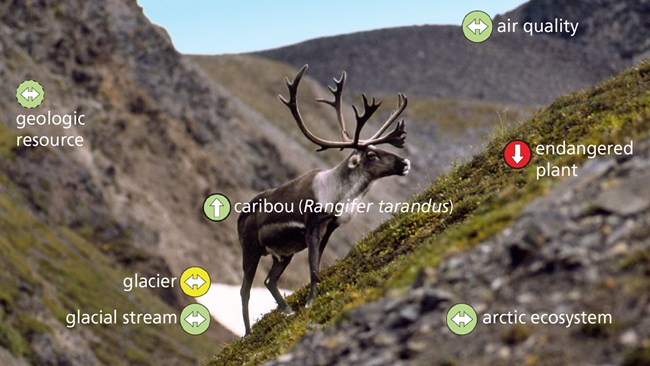While some parks are often famous for interesting animals or spectacular landforms, natural resources in parks include all components of the ecosystems, from tiny bacteria to continent-spanning mountain ranges. Understanding the condition and trend of natural resources is key for parks and NPS planners to appropriately prioritize and allocate stewardship resources. A Natural Resource Condition Assessment (NRCA) is a reporting tool that provides a framework of rules for describing what we know and don't know about a resource, and what is the condition and the condition trend.
The Natural Resource Condition Assessment (NRCA) Program provides for the synthesis, analysis, and documentation of natural resource conditions. While the scope of both the resources and the reporting products may vary, the general mechanisms involved in composing an NRCA are similar. NRCAs follow these basic steps:
The Natural Resource Condition Assessment (NRCA) Program provides for the synthesis, analysis, and documentation of natural resource conditions. While the scope of both the resources and the reporting products may vary, the general mechanisms involved in composing an NRCA are similar. NRCAs follow these basic steps:
- Choose which park resources will be considered.
- Identify potential indicator species; animal or plant species that can be used to infer conditions in an ecosystem.
- Gather all available data and research in and around parks.
- Review information and look for how it has changed relative to a standard, measured or historic baseline.
- Determine if there is enough data to assign a condition. Do we know enough? Are there critical data gaps where future efforts should be focused?
- Determine trends in data for resources where data is available over time.

Last updated: April 7, 2022
